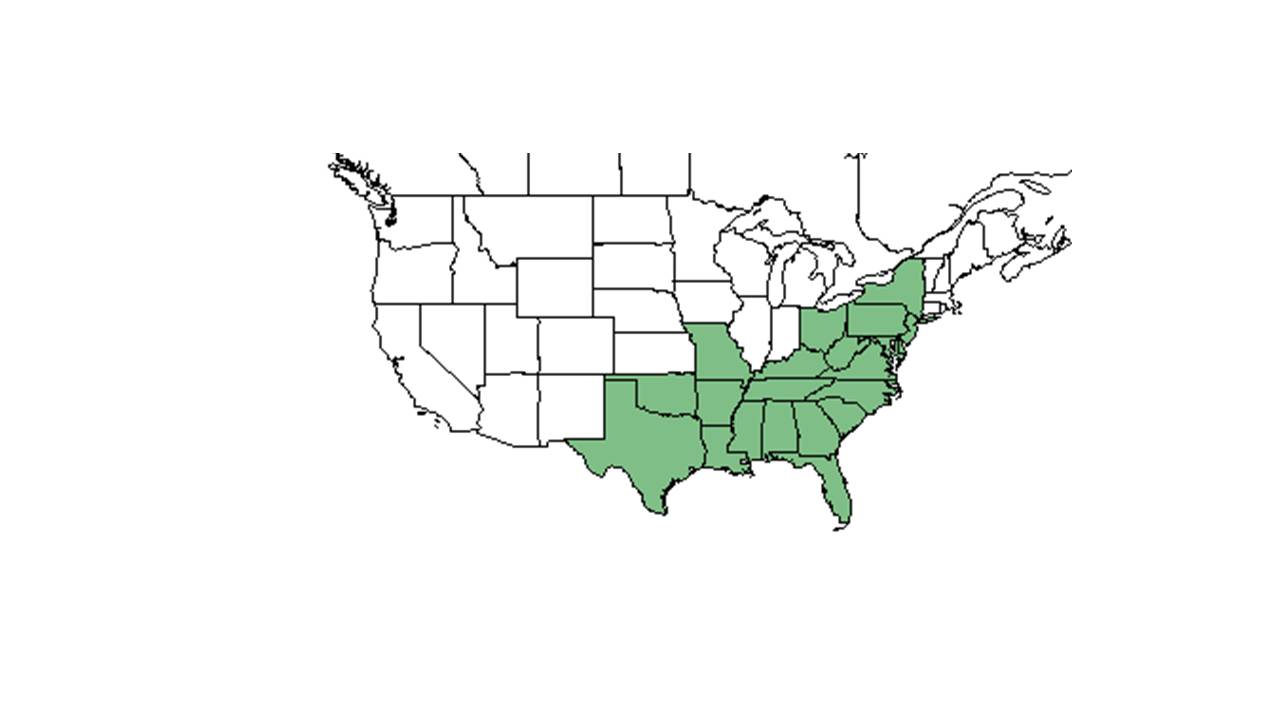Difference between revisions of "Crataegus uniflora"
KatieMccoy (talk | contribs) (→References and notes) |
KatieMccoy (talk | contribs) (→Ecology) |
||
| Line 32: | Line 32: | ||
===Habitat=== <!--Natural communities, human disturbed habitats, topography, hydrology, soils, light, fire regime requirements for removal of competition, etc.--> | ===Habitat=== <!--Natural communities, human disturbed habitats, topography, hydrology, soils, light, fire regime requirements for removal of competition, etc.--> | ||
| − | This species has been observed in semi open, mixed hardwood woodlands, sandy ridges, slopes, and within stands of slash pine on sandy soils. | + | This species has been observed in semi open, mixed hardwood woodlands, sandy ridges, slopes, and within stands of slash pine on sandy soils. Thrives in open light and shaded environments in moist loamy soils, dry sand, and loamy sands. It also occurs in disturbed sandy soils associated with sand pine, longleaf pine, and turkey oak community<ref name="fsu"/>. |
Associated species includes slash pine, sand pine, longleaf pine, turkey oak, red oak, post oak, mockernut hickory, magnolia, ''Viburnum rufidulum'', and others<ref name="fsu"/>. | Associated species includes slash pine, sand pine, longleaf pine, turkey oak, red oak, post oak, mockernut hickory, magnolia, ''Viburnum rufidulum'', and others<ref name="fsu"/>. | ||
===Phenology=== <!--Timing off flowering, fruiting, seed dispersal, and environmental triggers. Cite PanFlora website if appropriate: http://www.gilnelson.com/PanFlora/ --> | ===Phenology=== <!--Timing off flowering, fruiting, seed dispersal, and environmental triggers. Cite PanFlora website if appropriate: http://www.gilnelson.com/PanFlora/ --> | ||
| + | ''C. uniflora'' is a hermaphroditic species<ref name=pfaf>[[http://www.pfaf.org/user/Plant.aspx?LatinName=Crataegus+uniflora]]Accessed: April 16, 2016</ref> with inferior ovaries<ref name=biosurvey>[[http://www.biosurvey.ou.edu/shrub/crat-uni.htm]]Accessed: April 16, 2016</ref>. | ||
It has been observed flowering in April and July and fruiting in April and June<ref name="fsu"/>. | It has been observed flowering in April and July and fruiting in April and June<ref name="fsu"/>. | ||
<!--===Seed dispersal===--> | <!--===Seed dispersal===--> | ||
<!--===Seed bank and germination===--> | <!--===Seed bank and germination===--> | ||
<!--===Fire ecology===--> <!--Fire tolerance, fire dependence, adaptive fire responses--> | <!--===Fire ecology===--> <!--Fire tolerance, fire dependence, adaptive fire responses--> | ||
| − | + | ===Pollination=== | |
| − | + | Pollinated by midges<ref name=pfaf/>. | |
| + | ===Use by animals=== <!--Herbivory, granivory, insect hosting, etc.--> | ||
| + | Fruits are eaten by several species of birds. The dense branching supplies shelter to a variety of animals<ref name="discover">[[http://www.discoverlife.org/mp/20q?search=Crataegus+uniflora]]Discover Life. Accessed: April 14, 2016</ref>. | ||
<!--===Diseases and parasites===--> | <!--===Diseases and parasites===--> | ||
Revision as of 09:23, 15 April 2016
| Crataegus uniflora | |
|---|---|

| |
| photo by Gil Nelson | |
| Scientific classification | |
| Kingdom: | Plantae |
| Division: | Magnoliophyta - Flowering plants |
| Class: | Magnoliopsida – Dicotyledons |
| Order: | Rosales |
| Family: | Rosaceae |
| Genus: | Crataegus |
| Species: | C. uniflora |
| Binomial name | |
| Crataegus uniflora Münchh | |

| |
| Natural range of Crataegus uniflora from USDA NRCS Plants Database. | |
Common name: dwarf hawthorn
Contents
Taxonomic notes
Synonyms: Crataegus gregalis Beadle; C. arenicola W.W. Ashe; C. raleighensis W.W. Ashe; C. pentaneura W.W. Ashe
Description
A description of Crataegus uniflora is provided in The Flora of North America. This species has been described as a small, tree-like, scraggly scrub[1].
Distribution
Found from New York and New Jersey south to north Florida, west to east Texas and northeast to south Missouri[2].
Ecology
Habitat
This species has been observed in semi open, mixed hardwood woodlands, sandy ridges, slopes, and within stands of slash pine on sandy soils. Thrives in open light and shaded environments in moist loamy soils, dry sand, and loamy sands. It also occurs in disturbed sandy soils associated with sand pine, longleaf pine, and turkey oak community[1].
Associated species includes slash pine, sand pine, longleaf pine, turkey oak, red oak, post oak, mockernut hickory, magnolia, Viburnum rufidulum, and others[1].
Phenology
C. uniflora is a hermaphroditic species[3] with inferior ovaries[4]. It has been observed flowering in April and July and fruiting in April and June[1].
Pollination
Pollinated by midges[3].
Use by animals
Fruits are eaten by several species of birds. The dense branching supplies shelter to a variety of animals[5].
Conservation and Management
Cultivation and restoration
Photo Gallery
References and notes
- ↑ 1.0 1.1 1.2 1.3 Florida State University Robert K. Godfrey Herbarium database. URL: http://herbarium.bio.fsu.edu. Last accessed: June 2014. Collectors: Robert K. Godfrey, Loran C. Anderson, Angus Gholson, Wilson Baker, Cecil R Slaughter, Andre F. Clewell, Annie Schmidt, M. Boothe, B. Boothe, Kathleen Craddock Burks, and Richard Gaskalla. States and Counties: Florida: Alachua, Clay, Calhoun, Gadsden, Leon, Liberty, and Putnam.
- ↑ [[1]]Lady Bird Johnson Wildflower Center. Accessed: April 15, 2016
- ↑ 3.0 3.1 [[2]]Accessed: April 16, 2016
- ↑ [[3]]Accessed: April 16, 2016
- ↑ [[4]]Discover Life. Accessed: April 14, 2016